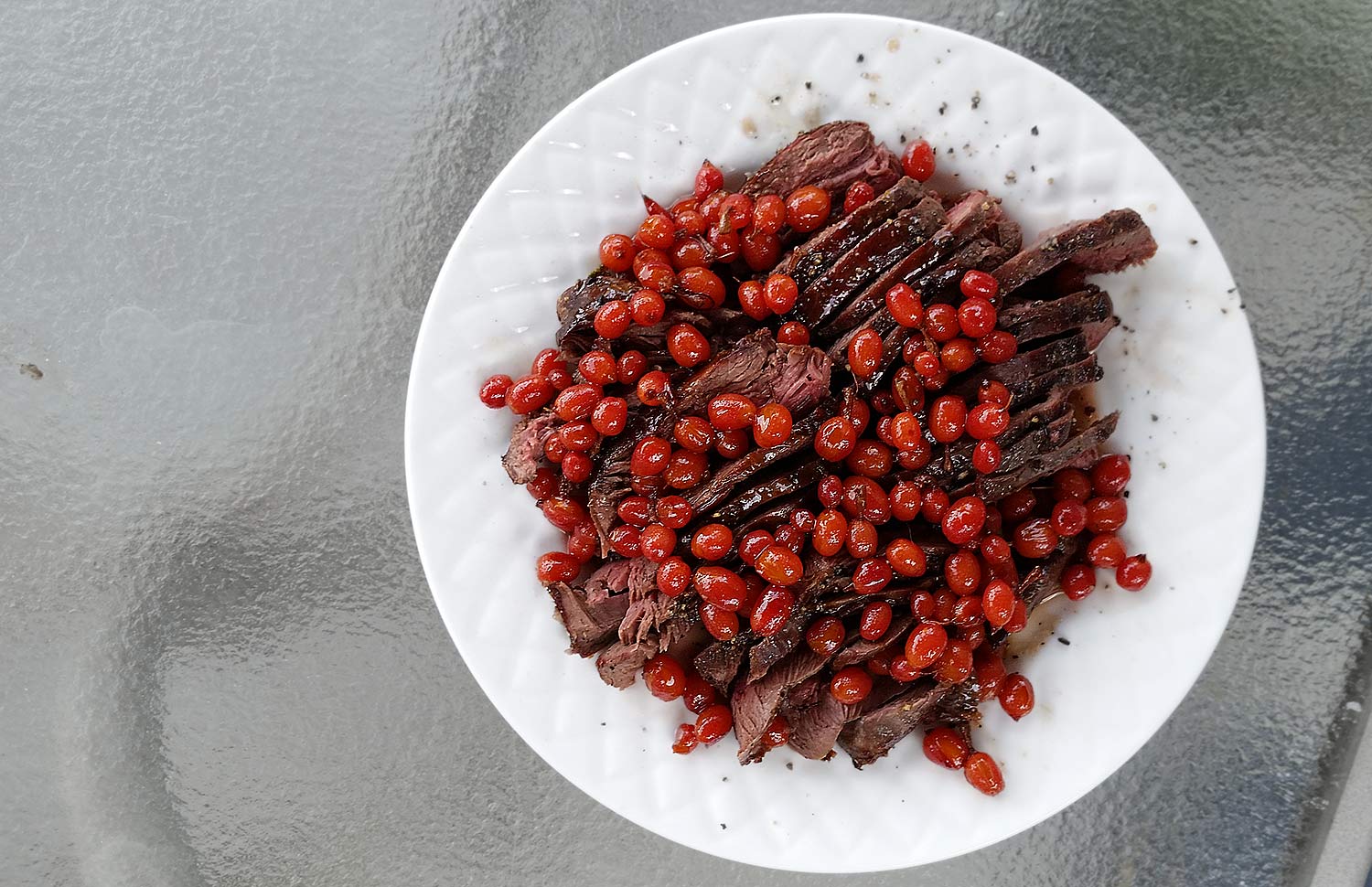
I am here to tell you that eating sage grouse is not the chore you think it is.
Of all the game birds in America, none is more maligned than Centrocercus urophasianus, the greater sage grouse. This particular grouse is native to our great Western High Desert, roughly centering on Wyoming, and reaching out to California, Oregon, Idaho, Nevada, Utah, Montana, Colorado, and, to a limit extent, the far western Dakotas and southern Alberta.
It is a bird wholly of the sage. I wrote about hunting these birds — and of the need to work to save their habitat — in this space recently, but this post is all about eating sage grouse.
First, know that sage grouse eat sage.
Sometimes it is all they eat. And even their other favorite foods, dandelions, yarrow, a few minor bean-like plants and the occasional bug, are merely accents to a steady diet of artemisia plants. And guess what? Sage grouse don’t have a muscular gizzard to grind hard foods like seeds. Freaky, eh?
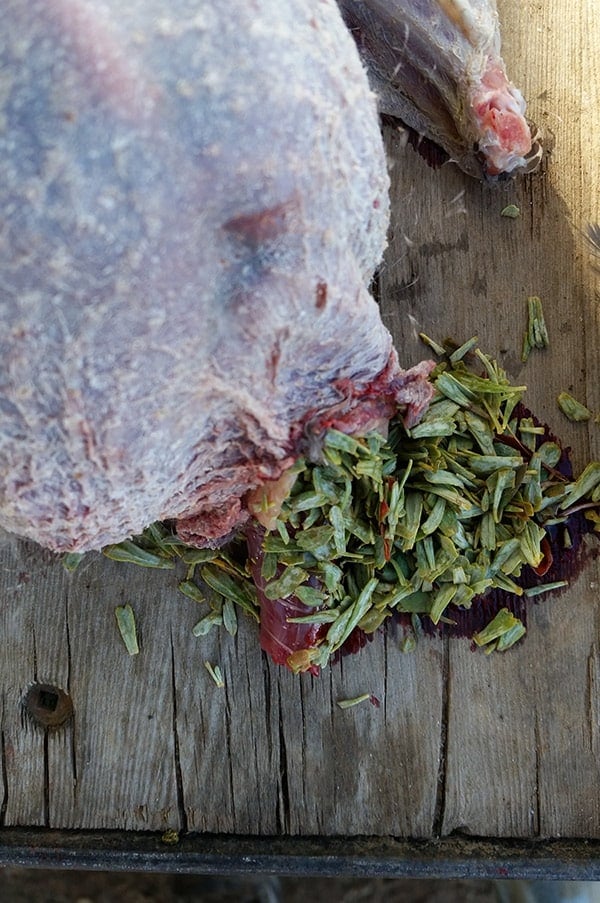
Yes, artemisia, as is the same plant as wormwood (of absinthe fame), and most definitely not the sage we eat, which is a salvia. Where I hunted the birds, they were full of tender tips of Artemisia nova, the black sagebrush. Made sense. It was all around us.
I tell you what sage grouse eat to tell you what they will taste like. You are what you eat, after all. And that answer is sage. Beautiful, aromatic, beguiling sage. The smell of sage in the high desert is intoxicating, a smell real men should all have as a cologne. Slightly minty, vaguely camphorous, musky. It is an aroma of wildness.
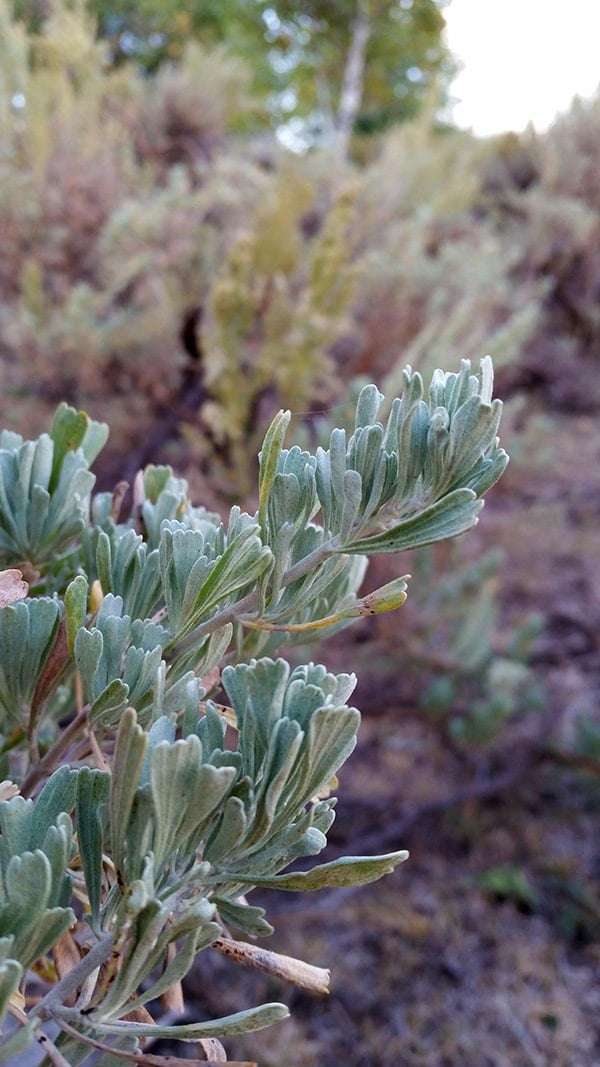
And it is not to be shunned. Virtually every person who hates on sage grouse complains of this sagey-ness. To which I say, well, sure! What do you expect? Do not try to undo what Nature gave you. Embrace that aroma along with that gamey funk that all grouse have. You can try to neutralize it, but you will fail unless you obliterate everything special about the taste of these very special birds.
And if you do that, why bother hunting them? Remember, you are not filling your freezer with sage hens. To shoot and eat one is a borderline ceremonial act.
Which brings me to the first step in my little guide to eating sage grouse: Choose hens. Both toms (roosters?) and hens will be sagey, but the general consensus is that the hens are more tender, especially a young-of-the-year hen like I shot. I know you don’t always have a choice when wingshooting, but if you do, swing at the hens for the table, toms for the wall.
Now, to pluck or not? I plucked my sage hen, because I wanted to see how hard it would be. The answer is not very, at least compared to pheasants, quail and ruffed grouse. Sage grouse skin is thicker than these other birds, and I found dry-plucking them to be pretty simple.
Why keep the skin? Well, in it lies much of the sage grouse’s special flavor. If this flavor is too strong for you, skin the bird.
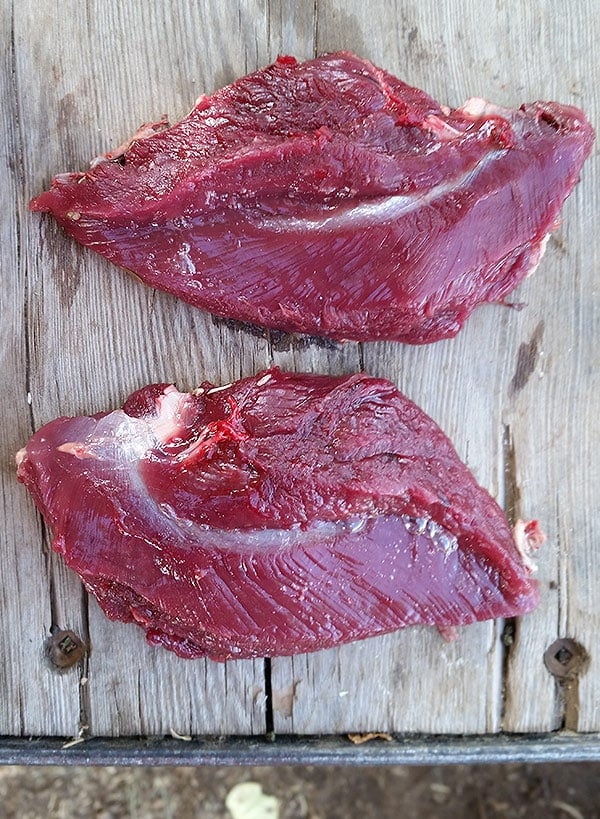
Note I said “skin,” not “breast.” Before I’d shot sage grouse, I’d believed that they were a dark meat grouse, like a sharp-tailed grouse. And, well, they are, kinda-sorta. What sage grouse actually are are what I call “opposite birds.” Dark breast meat, light legs, wings and thighs. It was super trippy to see that. The only other bird we hunt that I know is an opposite bird is a woodcock, but I hear that prairie chickens, a cousin of the sage grouse, are, too.
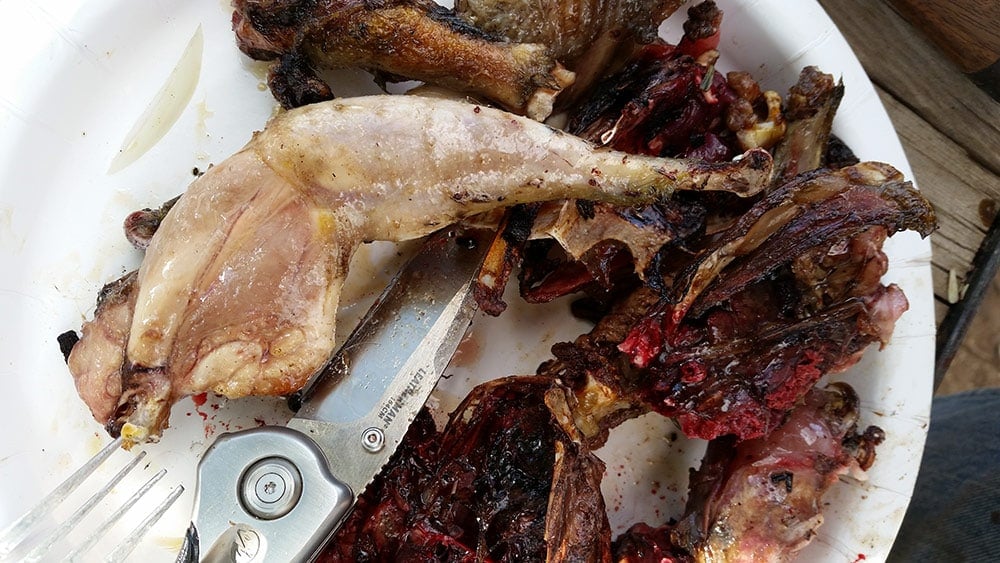
Why care? Because when you have a dark meat bird, you want to cook it like steak, not like chicken.
This is another huge mistake people have when eating sage grouse: They overcook the skinless breasts, which then taste like sagey liver. No bueno. Cook sage grouse breasts like a steak, or like the breast meat of a duck, goose, sharpie, dove or pigeon, which is to say rare to medium. Do this and they’re like a seasoned steak.
I cooked mine in butter with some red currants I’d found near where I’d shot the grouse, plus a splash of red wine vinegar and maple syrup and boom! The plate at the top of this post was eaten up in a nanosecond, and even the sage grouse skeptics snapped it up.
What to so with the rest of the bird? Treat it like any other grouse or pheasant.
I stewed mine to make a broth, then stripped all the meat from the bones and sinews in the drumsticks. Into that broth went potatoes, some juniper from a nearby tree, a can of chopped tomatoes, an onion and a little Coors Light. Hey, I was in hunting camp — it’s what I had around me.
Suffice to say everyone enjoyed it. The presence of even one sage grouse carcass in a bowl of soup transformed some boring ingredients into a celebration of the sagebrush sea we were camping in.
And what’s not to love about that?















































